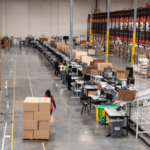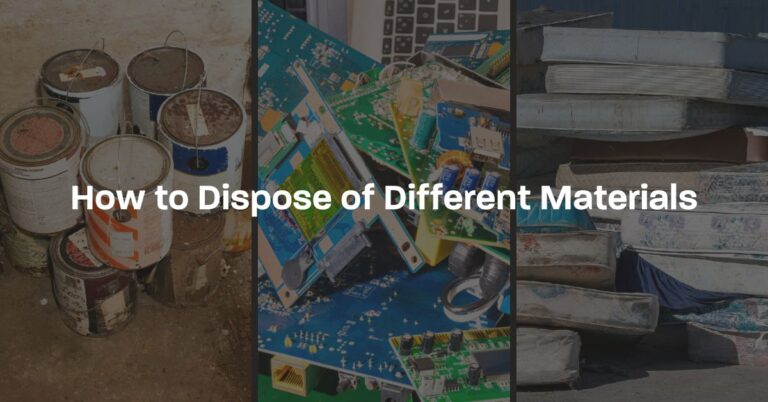Insights into e-waste: history, current data, statistics, and the environmental impact of WEEE
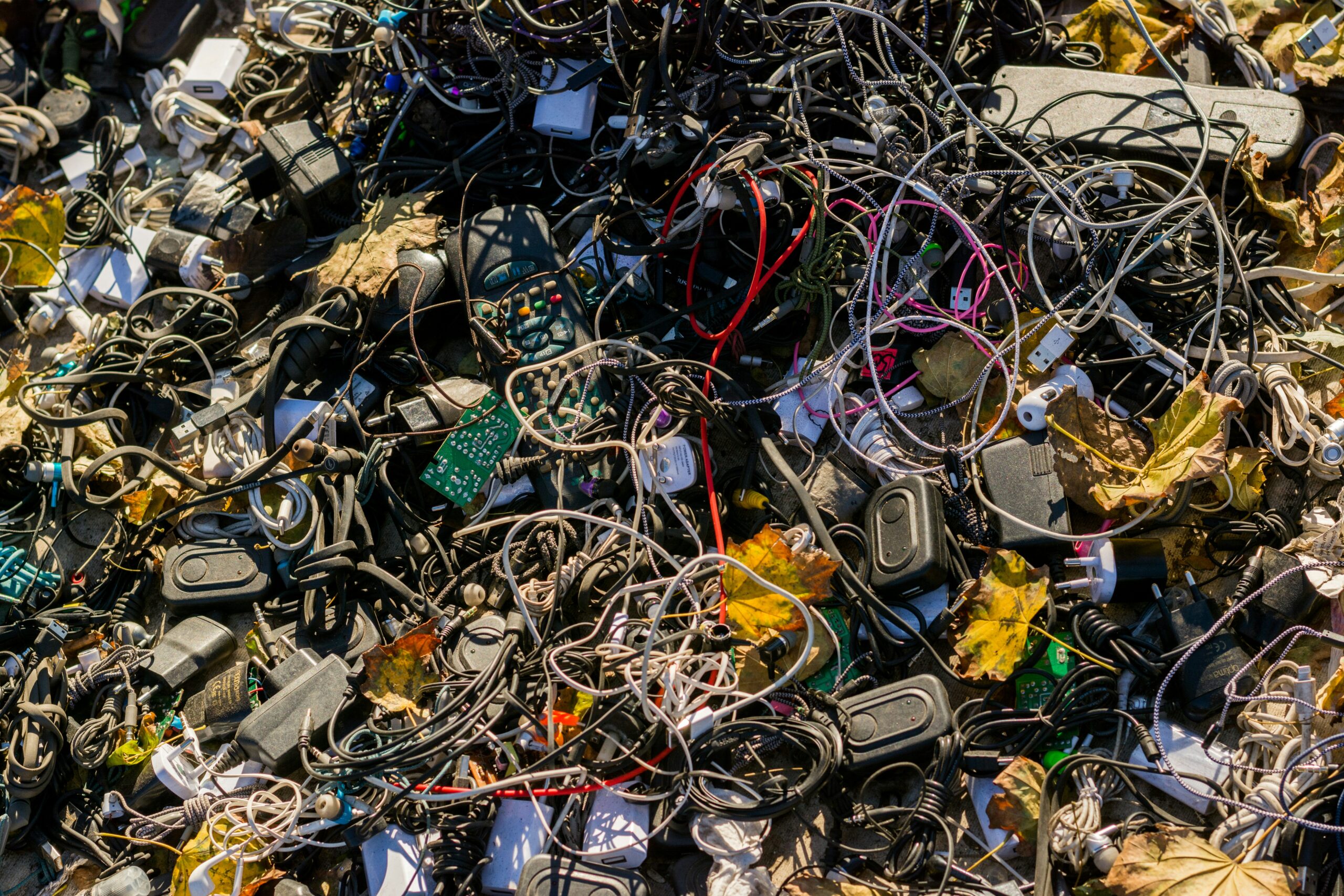
We use electronic devices every day, and it’s hard to imagine life without them. Yet not so long ago, WEEE didn’t even exist, now it’s a global problem. And with the benefits of electronics comes a price, the price our environment must pay. With the rapid development of electronic devices and the pursuit of better quality materials came a growing amount of waste that was ignored for a long time. What did it cost ? What measures had to be implemented? And how do we handle WEEE today? All of this will be explained in this blog.
Timeline of WEEE
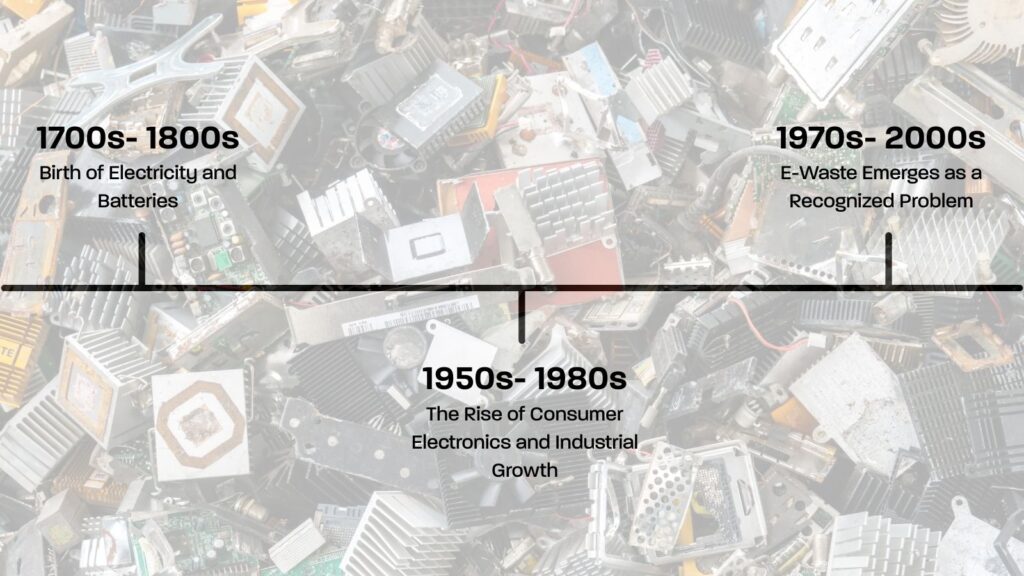
Birth of Electricity and Batteries: 1700s- 1800s
- 1744, Leyden Jar – invented by Ewald Georg von Kleist, this device was designed to store static electricity within a glass jar coated with metallic foil on both its inner and outer surfaces.
- 1749, Battery – first used to describe an electrical energy storage device by Benjamin Franklin.
- In 1800, Alessandro Volta invented the Voltaic Pile, the first true battery capable of producing a continuous electric current. In 1802, William Cruickshank improved the design, laying the foundation for future mass production.
- By 1879, Thomas Edison had developed a commercially practical incandescent light bulb that could burn for many hours, building on earlier work by inventors such as Humphry Davy and Joseph Swan, and marking a key milestone in the use of electricity for lighting.

The Rise of Consumer Electronics and Industrial Growth: 1950s–1980s
- After World War II, electronics such as radios, black-and-white TVs, vacuum tubes, and household appliances became common.
- These devices were designed to last decades, but disposal and recycling concepts were not established; hazardous components like lead in CRTs (cathode ray tubes) were buried without regulation.
- The Solid Waste Disposal Act (1965) was the first formal US law addressing general waste, but electronic waste was not yet distinctly regulated.
- Color CRT televisions, VHS players, and Walkmans in the 1970s–80s brought new challenges with toxic heavy metals and bulky hazardous waste.

E-Waste Emerges as a Recognized Problem: 1970s–Early 2000s
- 1976:The Resource Conservation and Recovery Act (RCRA) established a framework for managing solid and hazardous waste in the U.S. It did not explicitly ban e-waste in landfills, but it classified certain electronic components containing toxic substances (like lead or mercury) as hazardous, making their disposal subject to strict regulation.
1989: Basel Convention restricted international hazardous waste trade, including e-waste to prevent dumping in developing countries. - Early 1990s – countries like Switzerland pioneered formal e-waste recycling systems.
- 2000s: EU introduced the Waste Electrical and Electronic Equipment (WEEE) Directive to promote reuse and recycling.
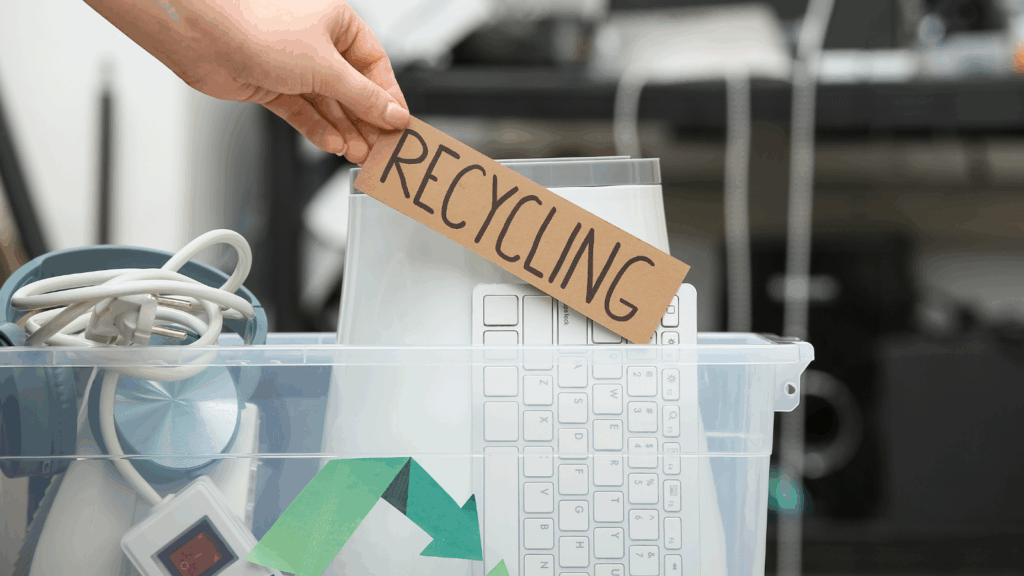
Recent Developments and Statistics
In 2022, the world generated around 62 million tons of electronic waste, that’s like 1.55 million 40-ton trucks packed full of discarded gadgets, or about 7.8 kilograms per person. Yet only 17.4% of it was properly recycled, while the remaining 82.6% ended up in landfills or polluting the environment, adding to an estimated 347 million tons of unrecycled e-waste worldwide. The average home now holds 74 electronic devices, many unused or broken, quietly piling up as future waste. At this pace, global e-waste is expected to hit 82 million tons by 2030, outstripping recycling capacity even as regulations like the RCRA and EPA programs in the U.S. aim to keep up.
Countries such as Estonia, Norway, and Iceland are showing what’s possible with strong recycling systems and public awareness. In Norway in particular, the 2025 National E-Waste Monitor reports that a robust national collection system enabled the country to gather 72% of its generated e-waste in 2022 (approximately 19.5 kg per capita). The Czech Republic has also taken a significant step forward in efficient WEEE collection and management, with our Sensoneo solution introducing smart digital tools and data-driven processes that enhance transparency, traceability, and overall system efficiency.
Global E-Waste Producers
1. China
China is the world’s largest producer of electronic waste. Its vast population, rapid technological development, and high consumption of electronic goods contribute to a significant share of global e-waste. As both a major manufacturer and consumer of electronics, China faces growing challenges in managing and recycling the massive amounts of discarded devices produced each year.
2. United States
The United States ranks second globally in e-waste generation. An average American produces over 20 kilograms of electronic waste annually, reflecting the country’s high turnover of gadgets and short product lifecycles. Despite advances in recycling programs, a large portion of this waste still ends up in landfills.
3. India
India is the third-largest e-waste producer, generating about 2 million tons each year. With an annual growth rate of around 20%, it is the fastest-growing major contributor. Rapid urbanization, increased digital access, and insufficient formal recycling systems have all fueled this surge, posing major environmental and health challenges.
Why Managing E-Waste Matters
1. Financial Losses
Improper e-waste management leads to massive economic losses each year. In 2022, the total global financial impact was estimated at $37 billion, representing the value lost through discarded materials that could have been recovered or reused. Additionally, externalized costs, such as healthcare expenses and environmental damage, reached around $78 billion, reflecting the broader financial burden on societies and ecosystems.

2. Lost Resources
Electronic waste is a hidden treasure trove of valuable materials, including rare earth elements, gold, silver, lithium, and other critical resources essential for modern technology. When e-waste is not properly recycled, these materials are permanently lost. Efficient recycling systems could recover and reintegrate these resources into the production cycle, reducing the need for new mining and supporting a more sustainable, circular economy.
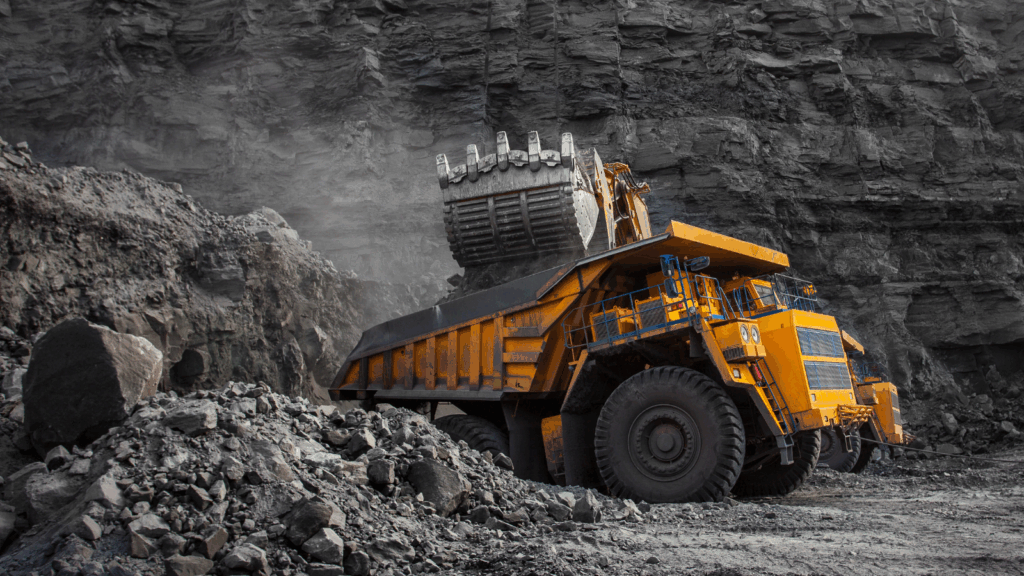
3. Environmental Impact
Beyond economic concerns, unmanaged e-waste poses severe environmental threats. Toxic substances such as lead, mercury, and cadmium leach into soil and water, polluting ecosystems and harming wildlife. Burning or improper disposal releases hazardous gases that contribute to air pollution and climate change. Effective e-waste management helps minimize these impacts, protecting both the planet and public health.

The Dark Side of E-Waste: Remembering Guiyu’s Story
For years, the town of Guiyu in southern China stood as the world’s most notorious e-waste hub, an “electronic graveyard”, where millions of tons of discarded electronics from wealthy nations were dismantled each year. Families worked in small workshops, melting circuit boards over coal stoves, “washing” gold with acid, and burning plastics to sort them by smell. These crude methods poisoned the town’s rivers, air, and soil with heavy metals like lead and mercury, while toxic fumes filled the narrow streets. Studies revealed alarming health effects: children with high blood lead levels, miscarriages, and widespread respiratory illness.
At its peak, more than half of Guiyu’s 200,000 residents depended on e-waste for survival. After global outrage and years of environmental damage, the Chinese government finally stepped in around 2015, shutting down informal operations and relocating recyclers to regulated industrial parks. Guiyu’s story remains a stark reminder of the hidden cost of our digital lives — and a warning not to let history repeat itself.
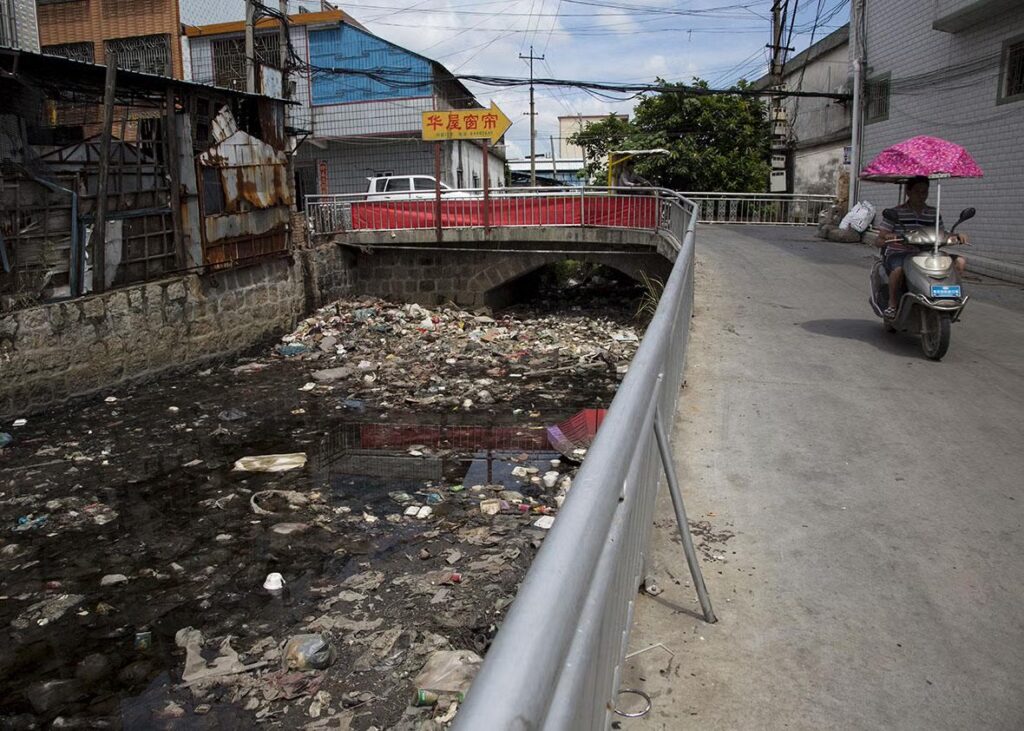
Although electronics bring countless benefits, from improving communication to even helping manage waste and protect the environment, we must not overlook the consequences that arise when they’re not handled properly at the end of their life. As with all waste, the principles of reuse, recycle, and recovery apply to WEEE and remain the most effective approach.
Take-back schemes for e-waste play a crucial role in this process. Yet, challenges such as half-empty bins, outdated route planning, lack of real-time data, and even theft of e-waste containers lead to wasted time, higher costs, and increased carbon emissions. These issues highlight the urgent need for innovation and digital transformation in e-waste management.
Sources: batterydesign.net, iberdrola.com, hummingbirdinternational.net, nalabix, epa.gov, mdpi.com, britannica.com, batteryuniversity.com
Latest waste library articles

The role of big data in optimizing industrial waste management
Industrial Waste
6 Best Circular Economy projects and initiatives worldwide
Environment
How to dispose of hazardous waste?
How to recycle?
How to dispose of different materials
How to recycle?
Smart Waste Newsletter
Get monthly updates from our company and the world of waste!







